Plant proteins to 'meat' changing consumer demands

For many people, nothing beats the taste and texture of a big juicy burger, but how do you recreate that eating experience with sustainable plant-based protein?
That is the culinary quest of University of Queensland engineers and food scientists as part of a three-year Australian Research Council project in partnership with US-based Motif FoodWorks, Inc., a food technology company on a mission to make plant-based food more nutritious and taste better.

Professor Jason Stokes in his laboratory. Image: Megan Pope
Professor Jason Stokes in his laboratory. Image: Megan Pope
Professor Jason Stokes from UQ’s School of Chemical Engineering said attributes like taste, texture, and smell combined are primary drivers for consumers when considering a meat-free option.

Professor Jason Stokes in his laboratory. Image: Megan Pope
It's not just the taste, it has to be the texture as well, so the team wanted to understand the mechanics that occur during eating and stimulate them in a laboratory," Professor Stokes said.
“People want to continue to eat meat but supplement their diet with a plant-based protein for environmental and sustainable reasons.
“They’ve started to demand quite a bit from the product, and want it to have the same characteristics as a normal meat experience while also being healthy.“
Queensland Alliance for Agriculture and Food Innovation’s (QAAFI) Associate Professor Heather Smyth said innovations around texture mechanics were the key to creating the best plant-based eating experience.
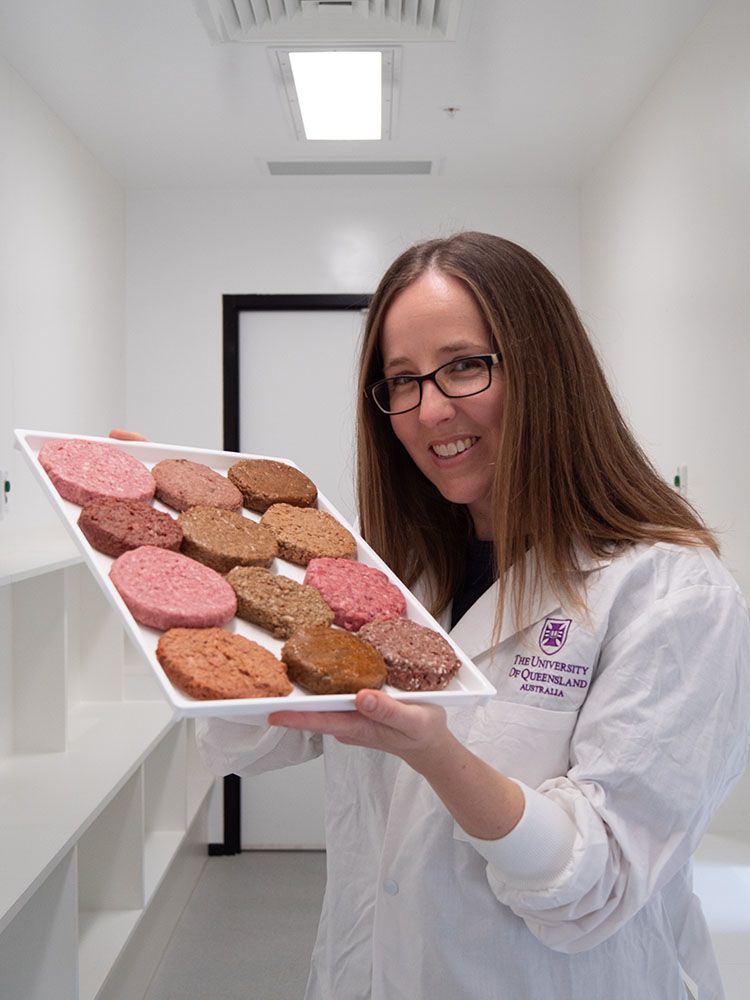
Associate Professor Heather Smyth in the sensory lab. Image: Megan Pope
“Are there different ways of pre-treating plant protein in a way that makes it behave more meat-like in the first place, rather than just compensating burger formulations with various synthetic additives?” Dr Smyth said.
“This might include fermenting them, extracting them differently or structurally modifying the plant-protein.
“Making the plant protein behave differently as an ingredient is really the space where we can have those breakthroughs, and already we’re seeing some interesting results.”

Associate Professor Heather Smyth in the sensory lab. Image: Megan Pope
Associate Professor Heather Smyth in the sensory lab. Image: Megan Pope

Dr Stefan Baier, Head of Food Science at Motif FoodWorks. Image: Tippingpoint Labs
Dr Stefan Baier, Head of Food Science at Motif FoodWorks. Image: Tippingpoint Labs

Dr Stefan Baier, Head of Food Science at Motif FoodWorks. Image: Tippingpoint Labs
“Through this work with the UQ team we’re bringing together the physics and sensory aspects of eating,” Dr Stefan Baier, Head of Food Science at Motif FoodWorks said.
“This project will unlock the secrets of food to help us design plant-based options that live up to the taste and texture expectations of consumers.”
“We really have been leading this area of research for some time and that’s why companies like Motif and others have come to us in Australia, even though we’re a long way away from where they do their work,” Professor Stokes said.
“The landscape’s changed and people now recognise the challenges in food research, and they’re large challenges in terms of how we perceive food and how we understand food, and rationally design and engineer their microstructure.”
It’s a challenge the team will tackle with relish.
About University of Queensland, School of Chemical Engineering and Queensland Alliance for Agriculture and Food Innovation
The School of Chemical Engineering is an international leader in chemical engineering education and research. Powered by a team of exceptional people, and strengthened by partnerships with industry and alumni – we create leaders, thinkers and innovators ready to take on the most pressing engineering challenges of our time. The Queensland Alliance for Agriculture and Food Innovation (QAAFI) is a research institute of The University of Queensland (UQ), supported by the Queensland Government. As one of the few research-intensive universities worldwide located in a subtropical environment, UQ is a global leader in agriculture and food science research in subtropical and tropical production systems.
About Motif FoodWorks
Motif FoodWorks is a food technology company working to make plant-based foods better tasting, more nutritious and so desirable that people actually crave them. The company's mission is to unleash the promise of plant-based foods by taking a new, holistic approach to food technology and ingredient development that combines science and technology — merged with sensory fundamentals — to reveal totally new answers. By changing our understanding of plant-based food, Motif will enable crave-worthy products that exceed taste and experience expectations, unlocking benefits for people and our planet. For more information, visit www.madewithmotif.com. Image: Culinary Garage.
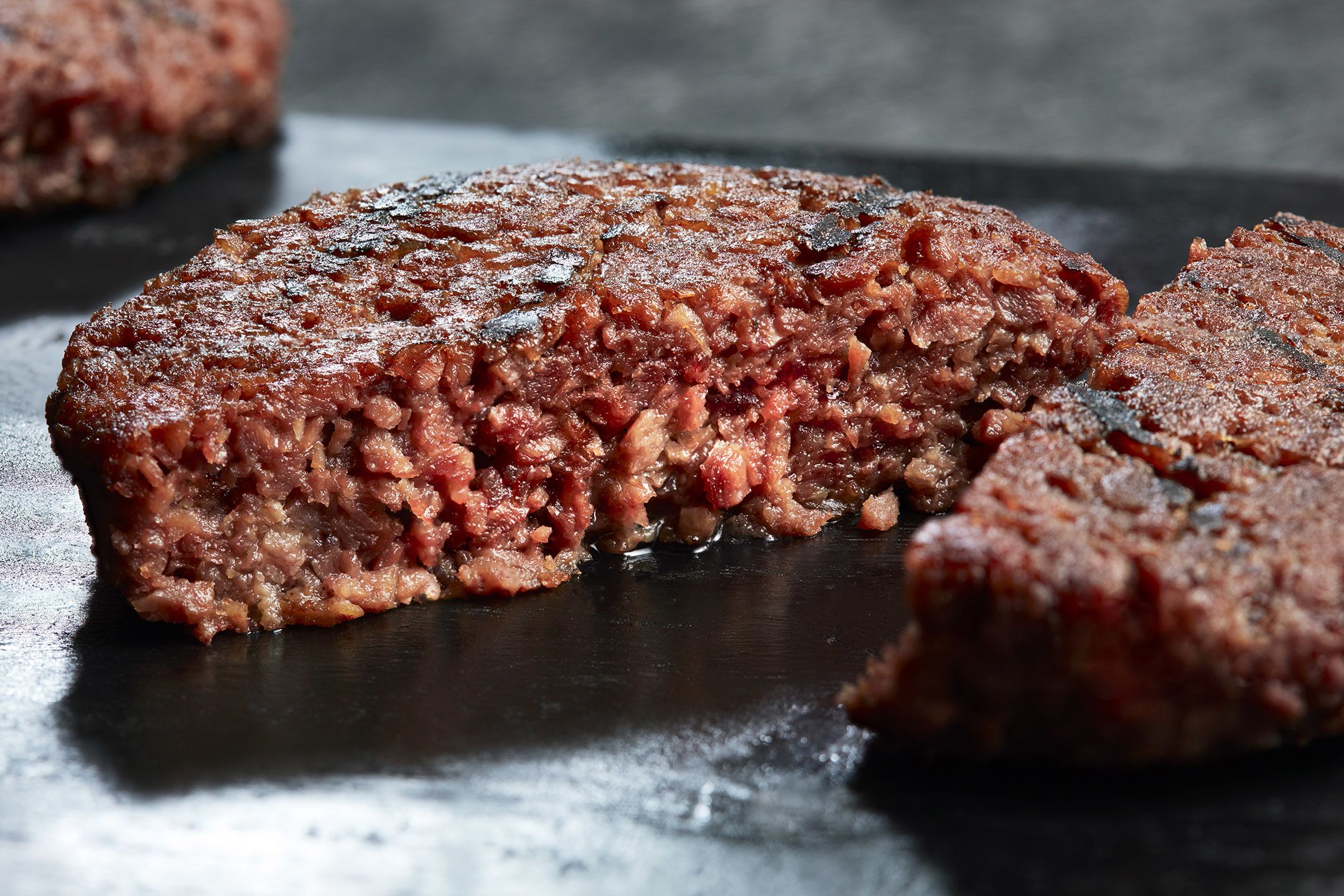
Media can access a VNR via Dropbox.
Media: UQ Communications, Natalie MacGregor, communications@uq.edu.au, +61 (0)409 135 651; Professor Jason Stokes, jason.stokes@uq.edu.au, +61 (0)7 3365 4361; Associate Professor Heather Smyth, h.smyth@uq.edu.au, +61 (0)7 3443 2469; Motif FoodWorks, Julia Dacri, jdacri@motiffoodworks.com, (+1) 508-868-9101.

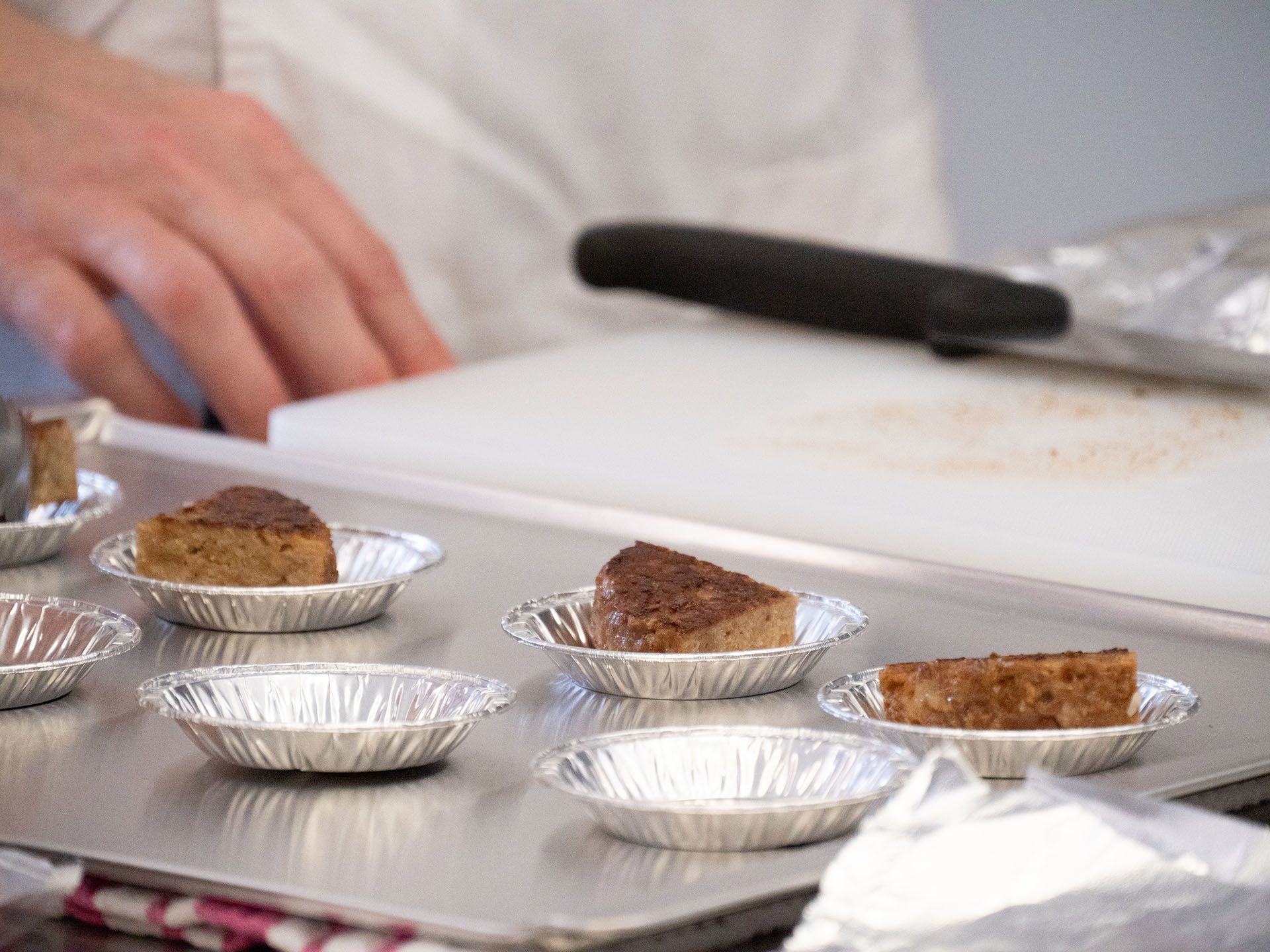
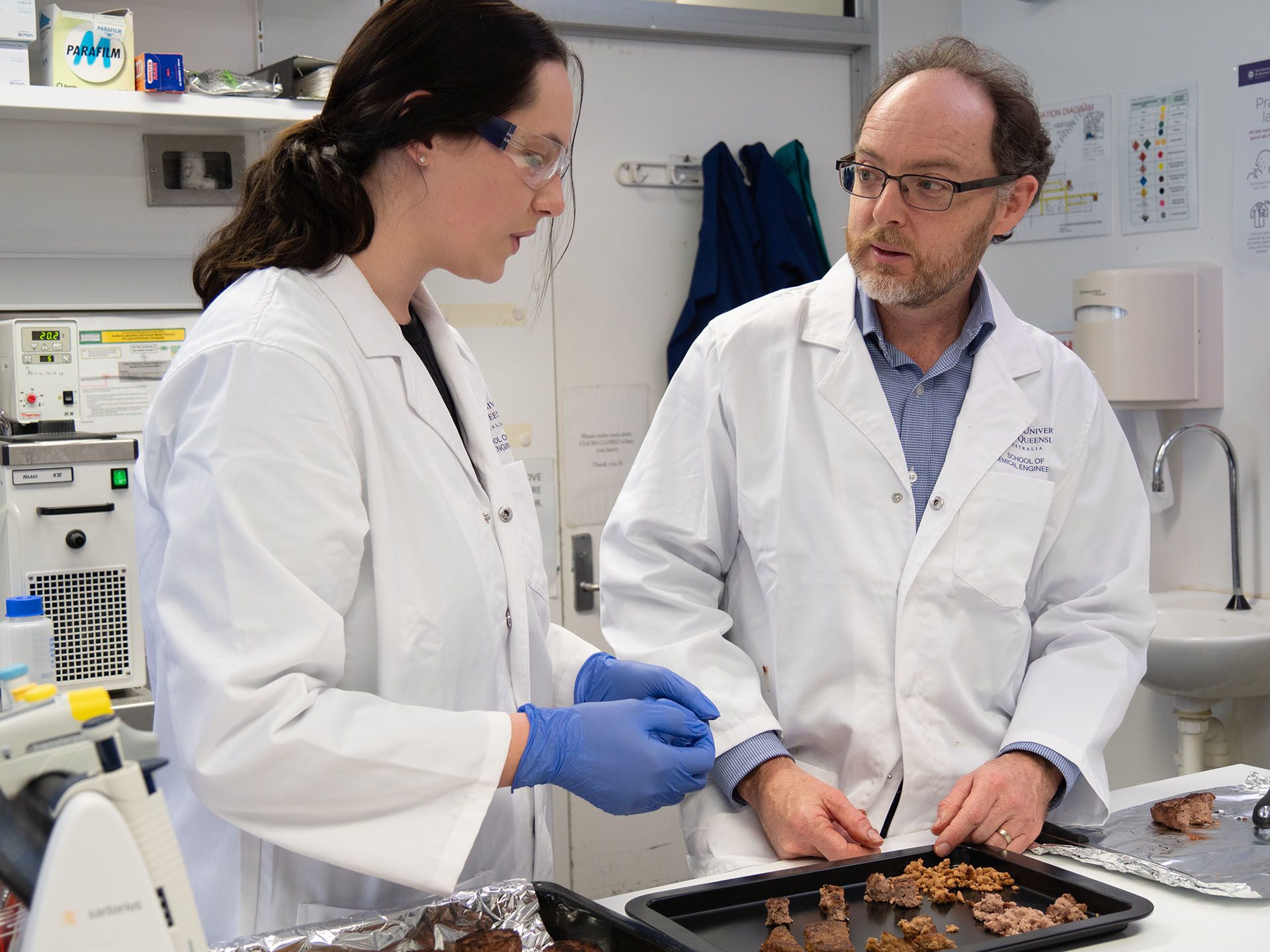
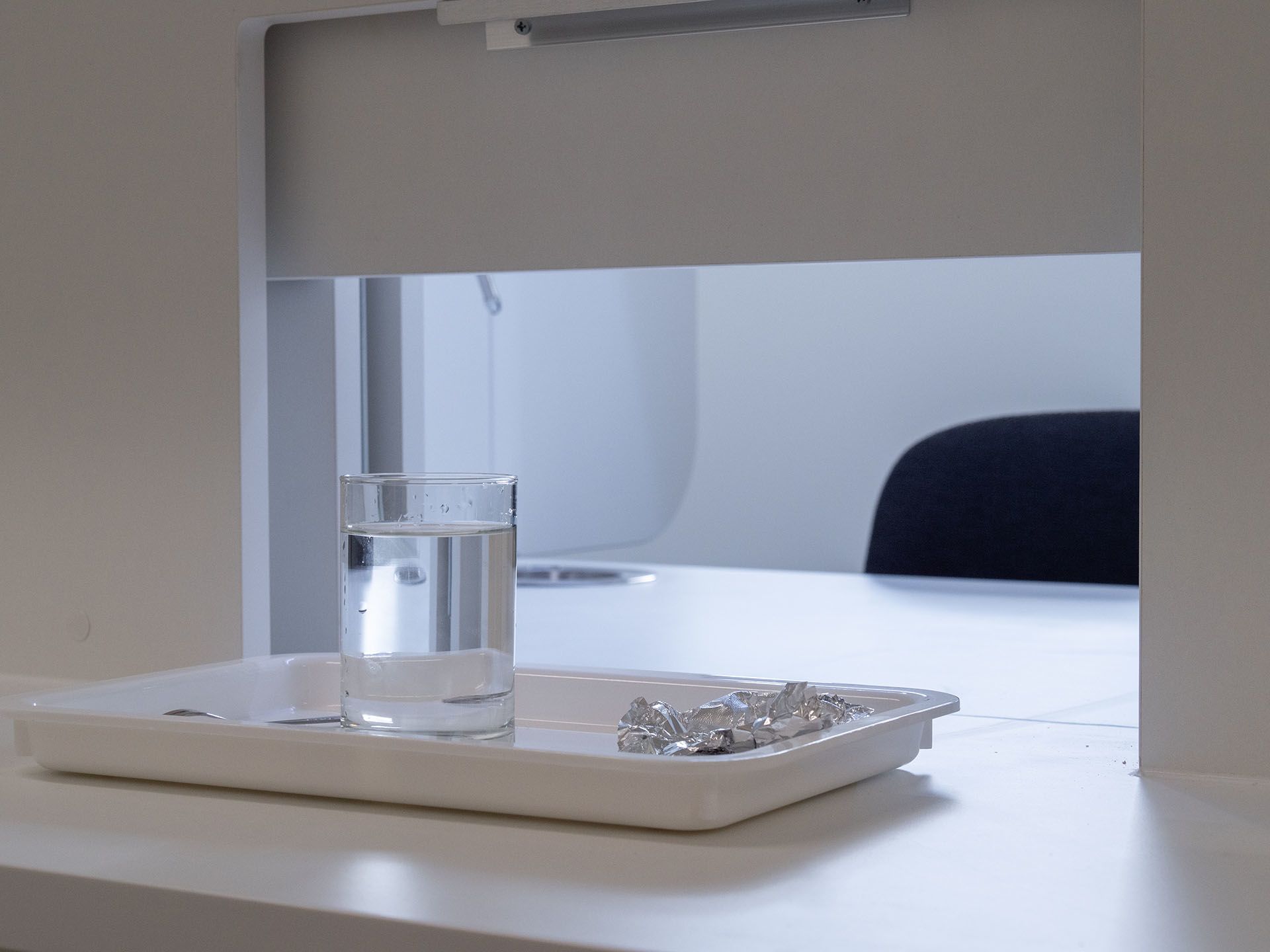
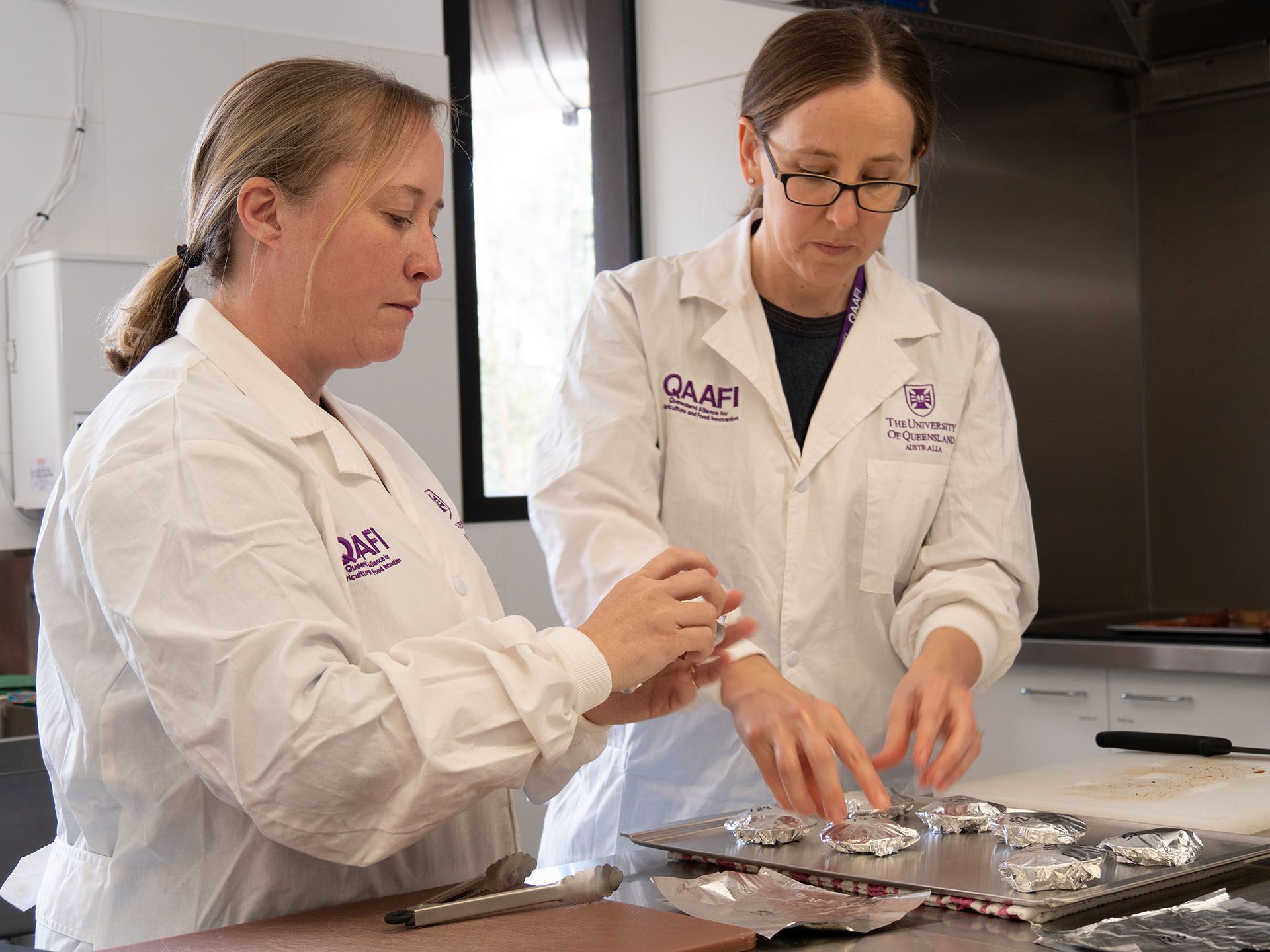

Associate Professor Heather Smyth and Professor Jason Stokes in QAAFI's sensory lab, where food testing is carried out.
Associate Professor Heather Smyth and Professor Jason Stokes in QAAFI's sensory lab, where food testing is carried out.

Preparing samples for testing. Image: Megan Pope
Preparing samples for testing. Image: Megan Pope

Laboratory testing. Image: Megan Pope
Laboratory testing. Image: Megan Pope

Sample in tasting room of QAAFI's sensory laboratory. Image: Megan Pope
Sample in tasting room of QAAFI's sensory laboratory. Image: Megan Pope

Sample preparation in sensory laboratory with Associate Professor Heather Smyth
Sample preparation in sensory laboratory with Associate Professor Heather Smyth
